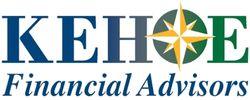Another year has drawn to a close and I would like to take this opportunity to thank you for being a part of our family here at Kehoe Financial. We truly appreciate the opportunity to serve you as we work toward your most-cherished financial goals. Below you will find our Principles that guide us on this journey with you, followed by our 2022 financial year in review. We hope you enjoy.
Principles
- We believe a portfolio that provides stable and growing dividends is the best way to provide a secure retirement without having to worry about the daily fluctuations in stock prices.
- Temporary market declines have been very different from permanent loss of capital and the most effective remedy to volatility has simply been the passage of time. These market declines also provide buying opportunities.
- We do not suggest that your investments will outperform any or all market benchmarks, which is an outcome that neither us nor any other advisor can control. Our essential principles of portfolio management in pursuit of our clients’ goals are: 1) The portfolio we recommend will at all times afford, in our judgment, your best chance of achieving your long-term financial goals. 2) Risk should be measured as the probability that you won’t achieve your goals. 3) Investing should have the exclusive objective of minimizing that risk.
- Most of our clients are working on long-term plans, for such great goals as education, retirement, tax minimization, and legacy. Every success story we have seen has acted continuously on a plan, staying disciplined to the task at hand, and tweaking when necessary. As goal focused and planning driven advisors, we Listen, Educate, and Guide our clients toward those goals.
2022 Financial Year in Review
- 2022 will be best known for one word: inflation. As the year comes to a close, the latest CPI report, released in December, had inflation up 7.1% for the year through November. While this is down from the high of 9.1% this summer, it is still well above the Federal Reserve’s target inflation of 2%. The Fed has been encouraged by signs of inflation easing but will want to see the trend continue before declaring victory.
- Against this backdrop, the Fed implemented a rate-hiking cycle with the aim of slowing the economy and bringing down inflation to healthy levels. Through seven rate hikes, including a flurry of four consecutive 75 basis point hikes between June and November, the Fed’s target rate increased by over 4%. The cost of borrowing also increased as mortgage rates more than doubled, closing out the year at 6.73% for a 30-year term. For savers, a welcome sight was 2-year Treasury Bills returning over 4%.
- On the international front, Russia’s invasion of Ukraine has proven much more difficult than Russia had planned. Steadfast Ukrainian forces, along with assistance from Western countries, have not only slowed the Russian advance, but have also regained some of the territory Russia initially occupied. The invasion sent commodity prices sharply higher early in 2022, but energy prices have declined in the second half of the year amid slowing economies. Adding to the economic uncertainty, China spent most of 2022 under a zero-covid policy. Entire towns and cities were shut down for weeks in an attempt to stop the spread.
- With few bright spots to grasp onto, 2022 was the worst year for the stock market since 2008. The S&P 500 finished down 19.4% while the Nasdaq tumbled 33.1%. Investment grade bonds dropped 13%, their worst year in history, marking the first time in the last 50 years that both stocks and bonds finished negative.
Heading into 2023, the burning question seems to be whether and to what extent the Fed, in its inflation-fighting zeal, might tip the economy into a recession – if it hasn’t already done so. All tightening cycles are a balancing act as too much tightening could cause a recession, too little could cause inflation to resurge. While a recession is by no means assured, any recession is expected to be short and mild, due to an economy that has shown resilience with strong employment, low leverage, and excess cash. Bright spots are also emerging. Inflation has come down and the Fed has signaled that they are approaching the end of their rate-hike cycle. Furthermore, China has significantly relaxed their zero-covid policy opening the path for stronger economic growth. Valuations have come down and forecasts for the last half of 2023 are calling for robust growth.
The last three years have seen a pandemic cause US GDP to drop 19%, followed by significant stimulus and inflation over 9%. It’s been incredibly volatile, yet the S&P 500 is up over 15% from where it ended in 2019. Not great, but also not bad considering all that has occurred and, if anything, it offers validation that the right strategy is to tune out the noise and focus on the long-term plan.
Thank you again and have a great new year!

Kevin Webb, CFP®


